I have been eating this Cuban pork shoulder recipe since my two front teeth grew in and i could chew solid foods. This recipe has been passed down within my family and it is an integral part of our Christmas traditions. This roast pork recipe also known as, lechon, is a Noche Buena staple in Cuban culture. While my dad was a chef in Cuba for many years, he perfected this recipe and the result is a delicious, juicy and flavorful roast pork. Depending on the size of your family, it's tradition to either roast an entire pig or just a paleta (pork shoulder).
For this recipe, we're using my family's homemade cuban mojo marinade and allow the pork shoulder to soak in the citrus flavors for a full 24 hours.
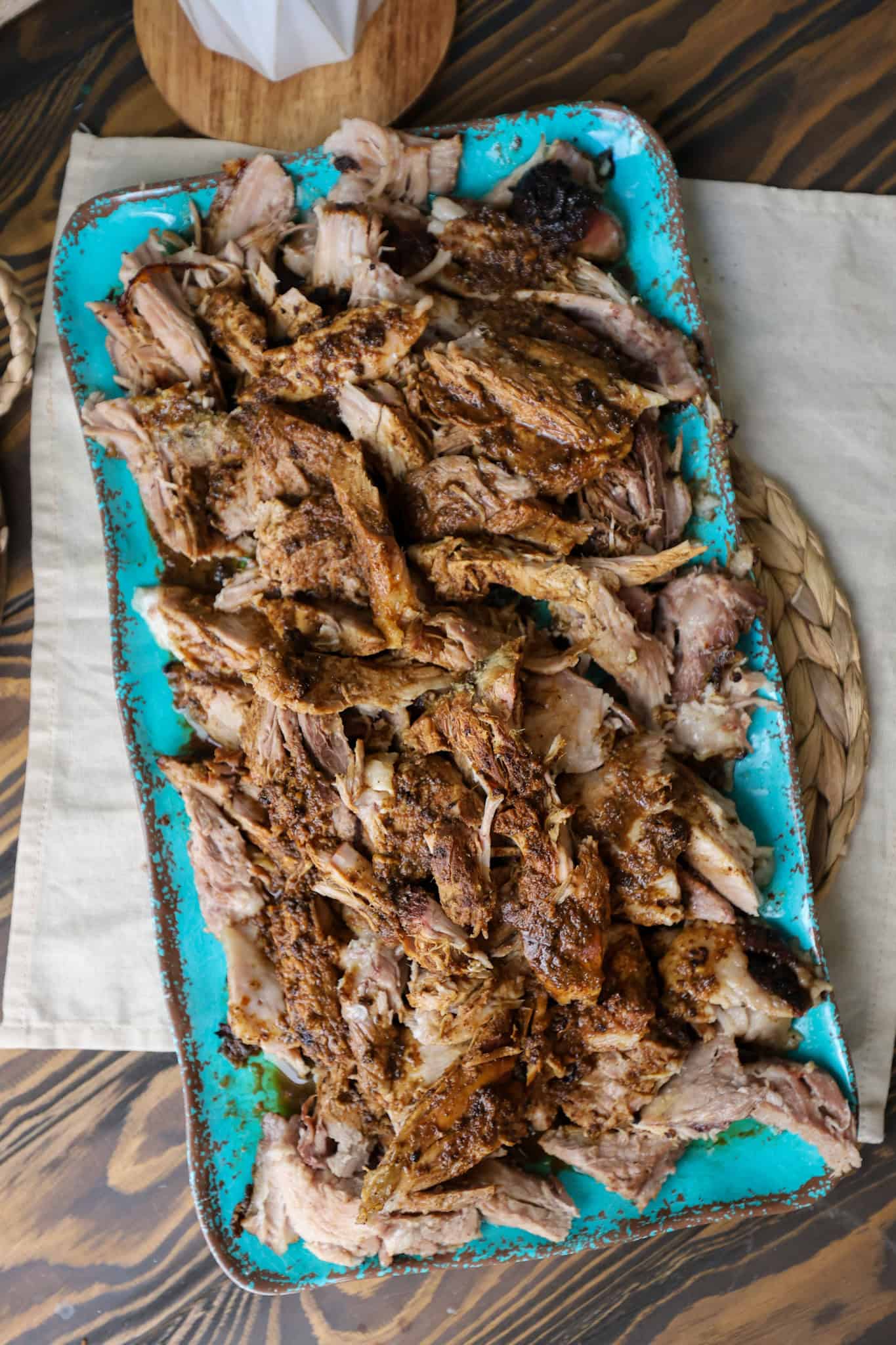
Why you'll love this Cuban Pork Recipe
- It's delicious: The combination of a tangy mojo marinade with slow-roasted pork creates a dish bursting with savory flavor. The mojo, with its blend of garlic, citrus, and spices, infuses the pork, resulting in a complex taste profile.
- Tender and Juicy: The slow roasting process ensures the pork becomes incredibly tender and juicy. Every bite is a delightful combination of textures and flavors.
- Versatile Application: Cuban roast pork is a versatile dish. It can be enjoyed on its own, shredded for sandwiches, used in stews, or served with various sides like rice, beans, and yuca.
- Great for special occasions Cuban roast pork is often served for special occasions like Christmas Eve dinner or family gatherings. It adds a festive touch to any meal.
- Easy to Prepare: Despite its deliciousness, Cuban roast pork is a relatively simple dish to prepare. The marinade requires a few basic ingredients, and the slow roasting process is mostly hands-off.
- Keto friendly; this cuban pork shoulder is has low carbs and is perfect for people abiding by a low carbohydrate diet.
- Great for feeding a crowd. This roast pork shoulder can feed 6-8 people easily.
Cuban Pork Recipe Ingredients
- Bone-in skin-on pork shoulder
- Sour oranges
- Garlic
- Bay leaves
- Oregano
- Onion powder
- Cumin
- Fresh ground black pepper
- Sugar
- Salt
- Sazon Completa
- sea salt
- Water

How to make Mojo Pork
- One to two days before you cook your lechon, begin the marinating process. I typically let the pork shoulder marinade between 24-48 hours. Using a medium size knife, make slits into the meat (not the skin side) and insert the garlic cloves deep into the meat. Then rub the sea salt all over the meat and skin of the pork shoulder.
- In a large oven-safe marinating bag, place the pork shoulder and the Cuban mojo. Place the bag in a 9x13 baking pan and place it in the refrigerator for at least 24 hours.

3. Once you're ready to roast, preheat your oven to 250 degrees. Remove the pork shoulder from the marinading bag and place it skin side up on a rack in a roasting pan
4. Pour the marinade that's inside the bag into the bottom of the roasting pan plus one cup of water.
5. Wipe off the skin of the pork shoulder to make sure it gets nice and crisp.
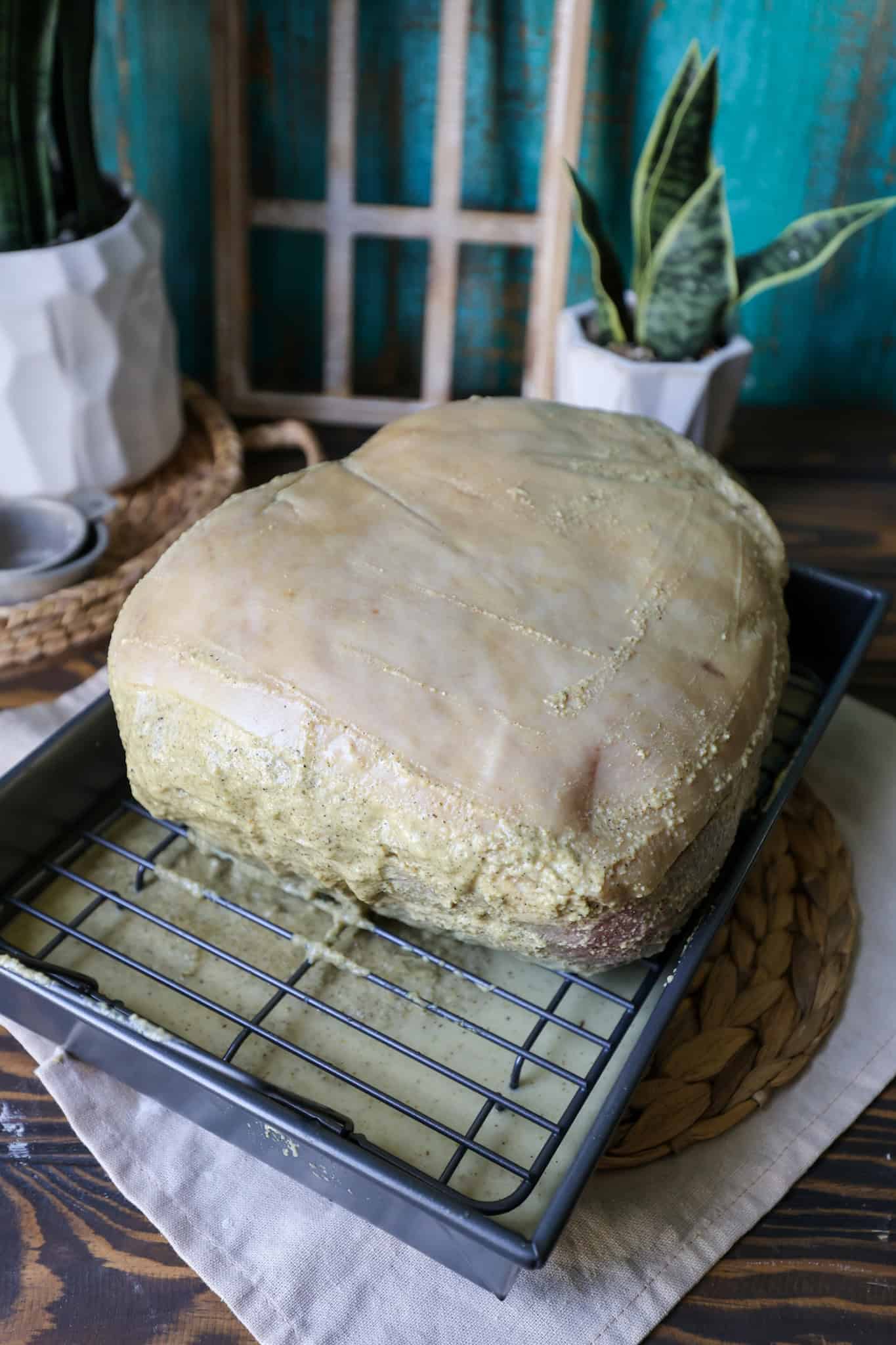
6. Loosely cover the pork shoulder with aluminum foil and place in the oven.
7. Bake at 250 degrees for the first 2 hours then increase the heat to 350 degrees and bake until a meat thermometer reads 190° (about 5-6 hours)
8. Remove foil; broil until the skin is crispy, 5–10 minutes. Be sure to watch the pork closely while broiling the skin as it can easily burn.
9. Remove from heat and allow to rest for 10 minutes.

10. To serve, you can either shred the meat or cut it into slices.
11. Be sure to save the drippings from the bottom of the roasting pan. I like to strain them and ladle about 1 cup's worth it over the meat for extra flavor when ready to serve.

Cuban Mojo Pork Variations
Cuban mojo pork is a flavorful and versatile dish, and there are many ways to put your own spin on it. Here are some variations to consider:
- Chicken: Substitute boneless, skinless chicken breasts or thighs for the pork shoulder. Adjust the cooking time to ensure the chicken is cooked through.
- Spicy Mojo: Add a kick of heat to your mojo by including chopped fresh chilies like jalapeños or habaneros. Start with a small amount and adjust to your preference.
- Smoky Mojo: For a deeper flavor, add a chipotle pepper in adobo sauce to the mojo marinade. This will infuse the pork with a smoky and slightly spicy taste.pen_spark
- Don't like so much salt? Adjust the amount of salt to your preference.
- Don't have time to make your own marinade? Storebought Cuban mojo will do in a pinch.
- Herbs: Fresh herbs like cilantro, parsley, or oregano can be added to the mojo for an extra layer of flavor.
- Can't find sour oranges, opt instead for ⅔ orange juice and ⅓ lime juice.
Cuban Pork Recipe Tips
Cuban mojo pork shoulder is a staple dish bursting with flavor. But achieving that perfect balance of savory, tangy, and juicy goodness requires a few key techniques. Here are some tips to elevate your mojo pork shoulder to delicious new heights:
The key is in the marinade:
- Time is Key: Marinating is crucial for infusing the pork with flavor. Aim for at least 4 hours, but ideally overnight. The longer the marinate, the deeper the flavor penetration.
- Don't Skip the Acid: Citrus juices like orange and lime juice in the mojo are essential. The acidity helps tenderize the meat and adds a bright, refreshing flavor.
- Embrace the Fat: Don't trim all the fat from the pork shoulder. This fat bastes the meat during cooking, keeping it moist and flavorful.
Cooking with care:
- Low and Slow: Cuban mojo pork is all about slow cooking. Use a low oven temperature (around 275°F / 135°C) and a long cook time (3-4 hours) to ensure the pork becomes tender and falls apart effortlessly.
- Internal Temperature Matters: Don't rely solely on time. Use a meat thermometer to check for doneness. The internal temperature of the pork should reach 190°F (88°C) for safety and optimal shreddability.
- The Power of Basting: Basting the pork occasionally with the pan juices during cooking keeps it moist and adds extra flavor.
The Finishing Touches:
- Crisp Up the Perfection: For a bit of textural contrast, shred the cooked pork and broil it for a few minutes to crisp up the edges. This adds a delicious caramelized layer.
- Reserve the Mojo: Don't discard the remaining mojo! Use it as a sauce for dipping the shredded pork or drizzle it over rice or vegetables for an extra flavor boost.
- Embrace Freshness: Finish your dish with fresh chopped onions and cilantro for a burst of brightness and a touch of Cuban flair.

What to serve with Cuban Mojo Pork
If you're serving this Cuban style roast pork shoulder for Noche Buena (Christmas Eve) The you typically serve it with white rice, black beans, yuca or even congri.
The left overs of this pork shoulder can also be used to make Cuban sandwiches, Cuban media noche sandwiches, as well as pan con lechon sandwiches.
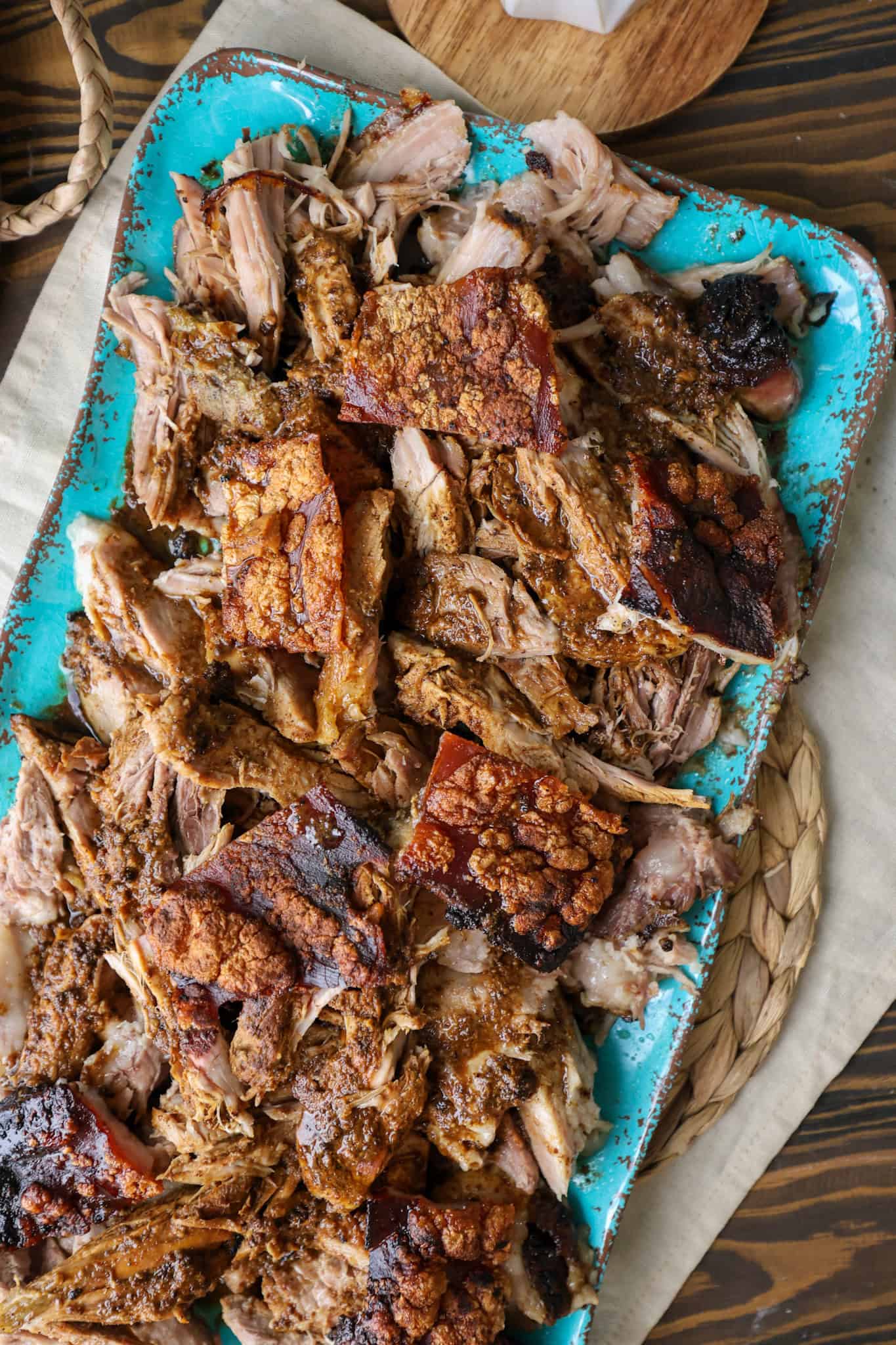
Storing leftover Cuban Roast Pork
Proper storage is crucial for maintaining the deliciousness of your Cuban roast pork. Here's how to store it:
Refrigerator Storage:
- Cool Completely: Allow the pork to cool completely to room temperature before storing.
- Airtight Container: Transfer the cooled pork to an airtight container.
- Storage Time: Store in the refrigerator for up to 3-4 days.
Freezer Storage:
- Cool Completely: As with refrigerator storage, allow the pork to cool completely.
- Portioning: Consider portioning the pork into meal-sized portions for easier reheating.
- Airtight Containers: Place the cooled pork in airtight freezer-safe containers or bags.
- Storage Time: Frozen Cuban pork can last for up to 2-3 months.
Important Tips:
- Always allow the pork to cool completely before storing to prevent bacterial growth.
- Label your containers with the date for easy reference.
By following these guidelines, you can enjoy your delicious Cuban roast pork for days or even weeks after it's cooked!
How to reheat
Reheating:
- Oven: Preheat oven to 350°F (175°C). Reheat covered in foil for about 20-25 minutes, or until heated through.
- Stovetop: Gently reheat in a skillet with a little bit of mojo sauce or broth.
- Microwave: Reheat in short bursts, covering with a damp paper towel to prevent drying out.
Important Tip:
- Reheat pork thoroughly until it reaches an internal temperature of 165°F (74°C) to ensure food safety.
Check out these other Cuban recipes
Cuban Mojo Pork
Ingredients
For the Cuban Mojo Marinade
- 1 cup of sour orange juice
- 20 garlic cloves
- 4 bay leaves
- 2 tablespoon of Oregano
- 2 tablespoon of onion powder
- 2 tablespoon of Cumin
- 2 teaspoon of fresh ground black pepper
- ½ teaspoon of sugar
- 2 Tabblespoon of Salt
- 2 tablespoon of Badia's Sazon Completo
- ½ cup of Olive oil
For the pork shoulder
- 6 lb pork shoulder
- 6 garlic cloves
- 1 tablespoon sea salt
Instructions
- One to two days before you cook your lechon, begin the marinating process. Place all of the ingredients for the Mojo marinade in a food processor and pulse until the garlic is pureed completely.
- I typically let the pork shoulder marinade between 24-48 hours. Using a medium size knife, make slits into the meat (not the skin side) and insert the garlic cloves deep into the meat. Then rub the sea salt all over the meat and skin of the pork shoulder.
- In a large oven-safe marinating bag, place the pork shoulder and the Cuban mojo. Place the bag in a 9x13 baking pan and place it in the refrigerator for at least 24 hours.
- Once you're ready to roast, preheat your oven to 250 degrees. Remove the pork shoulder from the marinading bag and place it skin side up on a rack in a roasting pan
- Pour the marinade that's inside the bag into the bottom of the roasting pan plus one cup of water. Wipe off any excess marinade of the skin of the pork shoulder.
- Loosely cover the pork shoulder with aluminum foil and place in the oven.
- Bake at 250 degrees for the first 2 hours then increase the heat to 350 degrees and bake until a meat thermometer reads 180° (about 5 hours)
- Remove foil; broil until the skin is crispy, 5–10 minutes. Be sure to watch the pork closely while broiling the skin as it can easily burn.
- Remove from heat and allow to rest for 10 minutes before serving
- Be sure to save the drippings from the bottom of the roasting pan. I like to strain them and ladle about 1 cup's worth it over the meat for extra flavor when ready to serve.
Video
Notes
Variations/Substitutions for this roast Cuban pork shoulder
Cuban mojo pork is a flavorful and versatile dish, and there are many ways to put your own spin on it. Here are some variations to consider:
- Chicken: Substitute boneless, skinless chicken breasts or thighs for the pork shoulder. Adjust the cooking time to ensure the chicken is cooked through.
- Spicy Mojo: Add a kick of heat to your mojo by including chopped fresh chilies like jalapeños or habaneros. Start with a small amount and adjust to your preference.
- Smoky Mojo: For a deeper flavor, add a chipotle pepper in adobo sauce to the mojo marinade. This will infuse the pork with a smoky and slightly spicy taste.pen_spark
- Don't like so much salt? Adjust the amount of salt to your preference.
- Don't have time to make your own marinade? Storebought Cuban mojo will do in a pinch.
- Herbs: Fresh herbs like cilantro, parsley, or oregano can be added to the mojo for an extra layer of flavor.
- Can't find sour oranges, opt instead for ⅔ orange juice and ⅓ lime juice.
Top tips for this Cuban mojo roasted pork shoulder
Cuban mojo pork shoulder is a staple dish bursting with flavor. But achieving that perfect balance of savory, tangy, and juicy goodness requires a few key techniques. Here are some tips to elevate your mojo pork shoulder to delicious new heights: The key is in the marinade:-
- Time is Key: Marinating is crucial for infusing the pork with flavor. Aim for at least 4 hours, but ideally overnight. The longer the marinate, the deeper the flavor penetration.
-
- Don't Skip the Acid: Citrus juices like orange and lime juice in the mojo are essential. The acidity helps tenderize the meat and adds a bright, refreshing flavor.
-
- Embrace the Fat: Don't trim all the fat from the pork shoulder. This fat bastes the meat during cooking, keeping it moist and flavorful.
-
- Low and Slow: Cuban mojo pork is all about slow cooking. Use a low oven temperature (around 275°F / 135°C) and a long cook time (3-4 hours) to ensure the pork becomes tender and falls apart effortlessly.
-
- Internal Temperature Matters: Don't rely solely on time. Use a meat thermometer to check for doneness. The internal temperature of the pork should reach 190°F (88°C) for safety and optimal shreddability.
-
- The Power of Basting: Basting the pork occasionally with the pan juices during cooking keeps it moist and adds extra flavor.
-
- Crisp Up the Perfection: For a bit of textural contrast, shred the cooked pork and broil it for a few minutes to crisp up the edges. This adds a delicious caramelized layer.
-
- Reserve the Mojo: Don't discard the remaining mojo! Use it as a sauce for dipping the shredded pork or drizzle it over rice or vegetables for an extra flavor boost.
-
- Embrace Freshness: Finish your dish with fresh chopped onions and cilantro for a burst of brightness and a touch of Cuban flair.


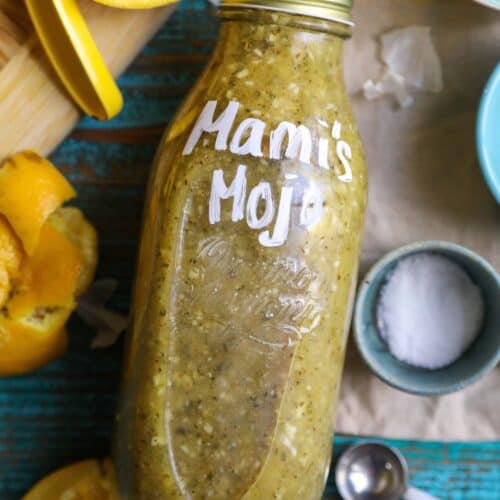
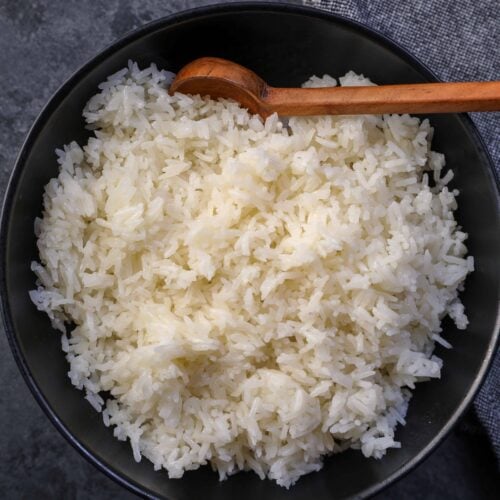

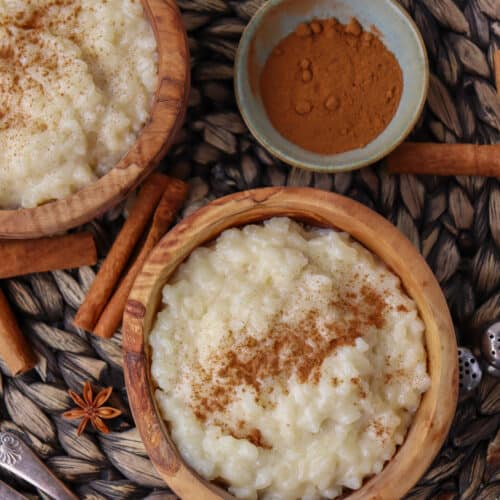

Luz says
Is the mojo you’re using store bought? If so, what’s the best brand to buy?
Cari says
It's not store bought! This is the recipe for the mojo - Traditional Cuban Mojo Recipe